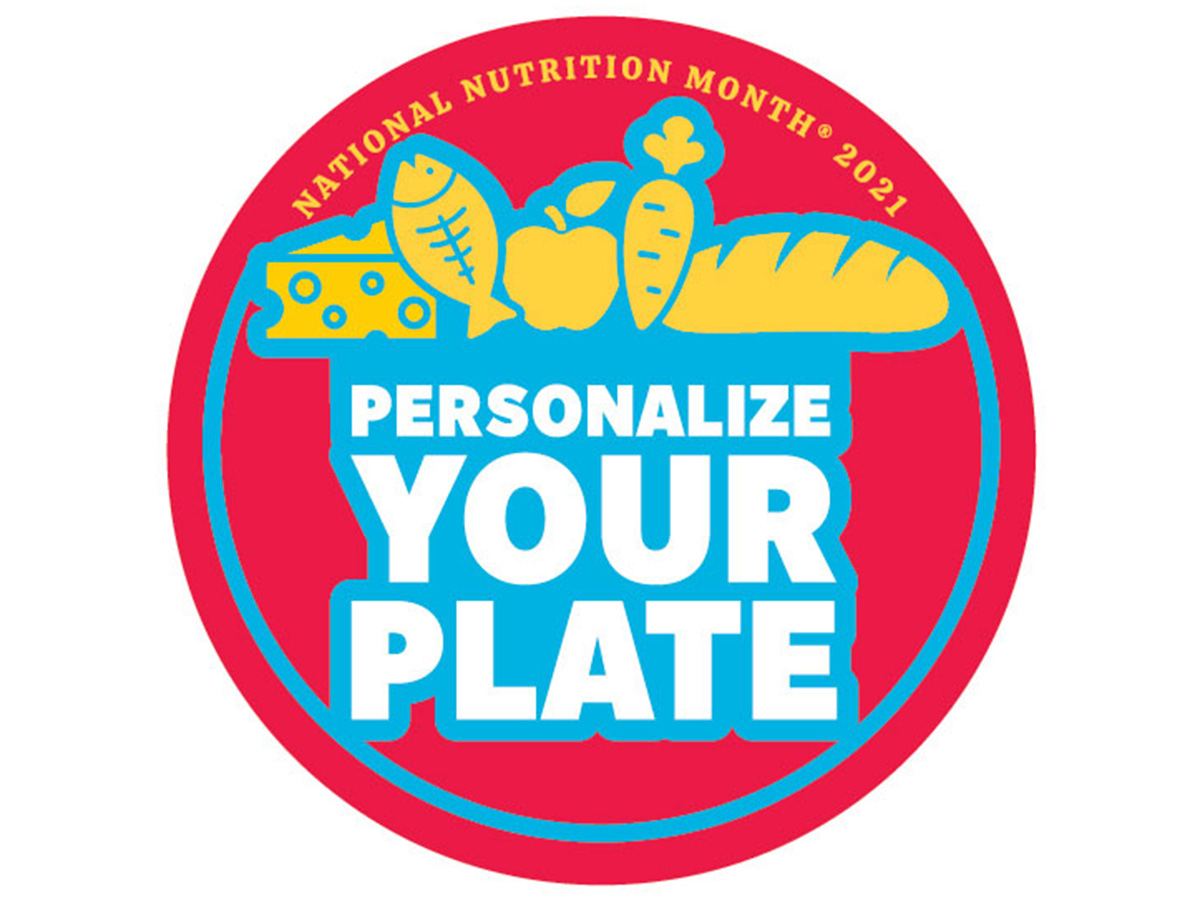
By Alyssa Havlovic, MS, RDN, ACSM EP-C, Extension Educator in Lancaster County
March is National Nutrition Month® and this year’s theme is “Personalize Your Plate.” There is no one-size-fits-all approach to health and nutrition. We all have different bodies, backgrounds, health goals and taste preferences. With the help of a Registered Dietitian, you can personalize a healthful eating plan that is as unique as you are!
VARY YOUR DIET
Personalize your plate by including foods you prefer from each food group. Including a variety of foods can help ensure your body gets the nutrients it needs to stay healthy. Use MyPlate as a guide and choose foods from all five food groups: fruits, vegetables, protein, grains and dairy. Start by filling half your plate with fruits and vegetables, then select lean proteins, whole grains and low-fat or fat-free dairy products. Avoid distractions while eating and take time to enjoy your food. Doing so will help you become more mindful of your body’s signals of hunger and satiety.
Hydration is also important. Make it a goal to drink at least half of your body weight in ounces of water each day (ex: If an individual weighs 150 pounds, they should aim for at least 75 oz of water each day). Plain water is always best to hydrate your body. If you don’t like drinking plain water, try adding lemon or lime slices or chopped fruit in it for a little extra flavor.
MEAL PLANNING
Set aside time to plan your meals and snacks each week. Involve your family members in the process of meal planning, so everyone has the opportunity to choose the healthful meals you will enjoy together. Take note of food items you have on hand and incorporate them into your weekly plan. Use a grocery list to shop for healthy foods your household enjoys and stick to your list. Keep a well-stocked pantry and freezer to make healthful meals simple. For tips on what to keep on hand for quick, healthy meals, see the sidebar below, “Keep a Well-Stocked Pantry.” For simple, budget-friendly recipe ideas to help build your weekly meal plan, visit http://food.unl.edu.
You may choose to dine out sometimes when celebrating a special occasion or just need a break from a week of cooking. When dining out, be menu-savvy. Plan ahead, ask questions, and review nutrition facts information when available. Select menu choices that are grilled, baked, broiled and steamed for healthy options that fit your nutritional needs.
COOK & PREP
Learn skills to create tasty meals at home. Explore Extension’s Nutrition Education Program’s “The Dish” series for cooking tips, health information and recipe demos: https://food.unl.edu/nutrition-education-program/dish-videos. Keep healthy foods in plain sight in your pantry or refrigerator. Make healthy eating the simple choice by washing and cutting up fresh vegetables when you bring them home from the grocery store. Remember to wash hands before cooking and eating and follow proper food safety guidelines when preparing meals and snacks.
Share meals together as a family as often as possible. Incorporate meals that are traditional to your family and background. Some food traditions are passed down from generation to generation and may not always be the most nutritious. Just add a new, healthy twist to make it fit your healthy eating plan or save those dishes for special occasions.
VISIT AN RDN
If you have special nutrition needs, consult a registered dietitian nutritionist (RDN). An RDN can design a customized eating plan that is as unique as you! For a referral to an RDN in your area, visit http://www.eatright.org.
Reference: http://www.eatright.org/food/resources/national-nutrition-month
****************************************
KEEP A WELL-STOCKED PANTRY
Items to keep on hand in your pantry and freezer for quick, healthy meals:
• Dried or canned beans, peas or lentils (such as black, garbanzo, kidney, pinto and white beans).
• Canned vegetables with no added salt (tomatoes, green beans, corn and peas).
• Whole grains (brown rice, oats, quinoa, whole wheat pasta)
• Canned fish and chicken.
• Olive, canola or other vegetable oils.
• Dried herbs and spices.
• Frozen vegetables (broccoli, cauliflower, carrots and brussels sprouts).
• Frozen fruits (berries, mangos and pineapple).
• Whole wheat pizza dough.
• Frozen poultry or seafood